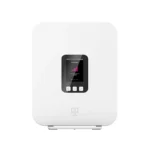Installing Windows can sometimes hit a snag, presenting users with errors that disrupt the process. One such error is Error Code 0x8007025D, which can occur when users attempt to install Windows 10 or Windows 11 from a USB drive. This error often indicates there could be an issue with the installation files.
Error Code 0x8007025D signals that the computer cannot read or write data correctly during the installation. This could be due to corrupt installation files, a problem with the USB drive, or the system struggling with hardware compatibility. To resolve the error, users might need to check their hardware, replace the USB drive, or re-download the installation files to ensure their integrity.
Solving the 0x8007025D Windows Install Error
The 0x8007025D error code can ruin your plans to install or upgrade Windows. Here’s how to fix it.
What Does the 0x8007025D Error Mean?
Usually, you’ll get a message like “Windows cannot install required files.” This error means there might be something wrong with the installation media you’re using, problems with your hard drive, or other hardware issues.
Troubleshooting the Error
Here are several ways to get your Windows installation working again:
Check Your USB Drive or DVD
- USB Port: Try a different USB port, especially if you’re currently using a USB 3.0 port. Some computers have issues with USB 3.0 installers for Windows.
- Scratched Disk: If you’re using a DVD, make sure the disk isn’t dirty or scratched.
- Recreate Installation Media: Download a new copy of the Windows installation files and create a new USB install drive or DVD. Sometimes, the original files become corrupt.
Check Your RAM
Bad RAM can create all kinds of problems. Here’s how to check it:
- Run the built-in Windows Memory Diagnostic tool. Type “Windows Memory Diagnostic” into the Start Menu and run the tool.
- If you think one of your RAM sticks is bad, remove one stick at a time and try the installation again. This will help you isolate the faulty stick.
Check Your Hard Drive
Use the Windows CHKDSK tool to scan your hard drive for errors. Here’s how:
- Open a Command Prompt window as an administrator.
- Type
chkdsk /rand press Enter. This command will scan your system drive and attempt to repair any errors.
Other Fixes to Try
| Solution | What to Do |
|---|---|
| Disconnect External Devices | Unplug all unnecessary devices like printers, webcams, and extra hard drives. |
| Reduce System Partition Size | Sometimes, Windows has trouble with very large partitions. If possible, try shrinking your system partition. |
| Check Your BIOS Settings | Make sure your SATA controller is set to AHCI mode in your computer’s BIOS. You might also need to disable Secure Boot and Fast Boot temporarily. |
Let me know if you continue to have problems after trying these fixes!
Key Takeaways
- Error Code 0x8007025D can interrupt the Windows installation process.
- The error can result from corrupted installation files, faulty USB drives, or hardware issues.
- Effective troubleshooting may include checking hardware, using a different USB, or redownloading installation files.
Troubleshooting Error Code 0x8007025D
When you encounter Error Code 0x8007025D during a Windows installation, it typically indicates there might be a problem with the installation media or the PC’s hardware. This section provides a series of steps to help resolve this common issue.
Verifying the Installation Media
Before proceeding with the installation, it is crucial to check that the USB stick or DVD being used is not the source of the problem. To do this:
- Use software to create a bootable USB drive again, ensuring the ISO image file is not corrupt.
- Attempt the installation process with a different USB flash drive in case the current one has bad sectors.
Ensuring Hardware Compatibility and Integrity
Hardware issues can trigger Error Code 0x8007025D. To rule out hardware complications:
- Run a Memory Diagnostic to check for issues with RAM.
- Use disk utility tools to scan the HDD or SSD for bad sectors.
- If errors are found, replace the damaged RAM sticks or hard drive.
Configuring System and BIOS Settings
Proper system configuration helps prevent installation errors:
- Check BIOS settings to ensure the boot order is set to start with the USB or DVD.
- Verify if a BIOS update is necessary for newer Windows versions.
Performing a Clean Installation
A clean install can often bypass the error:
- During Windows setup, select Custom install.
- Delete all existing partitions and create new ones ensuring adequate partition size.
- Format the new partition before proceeding with the installation.
These steps should help to troubleshoot and resolve Error Code 0x8007025D, allowing for a successful Windows installation.







